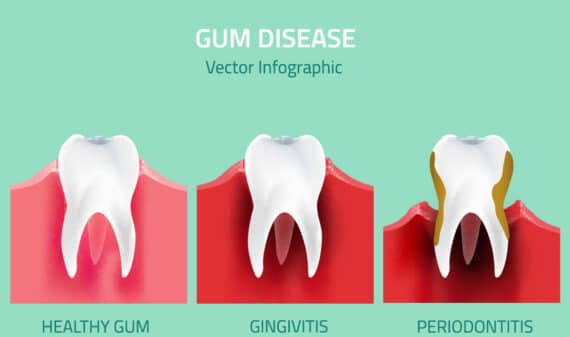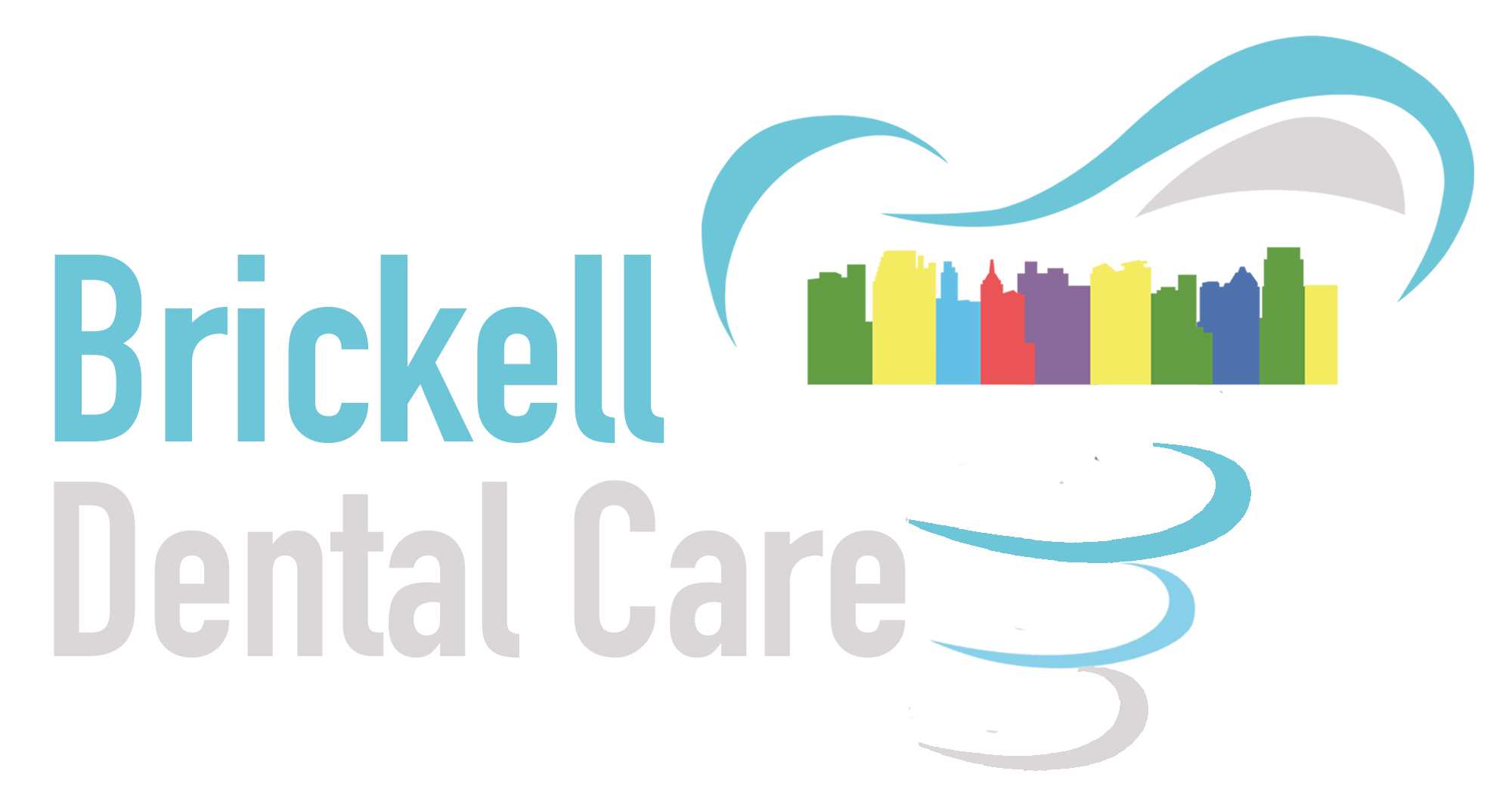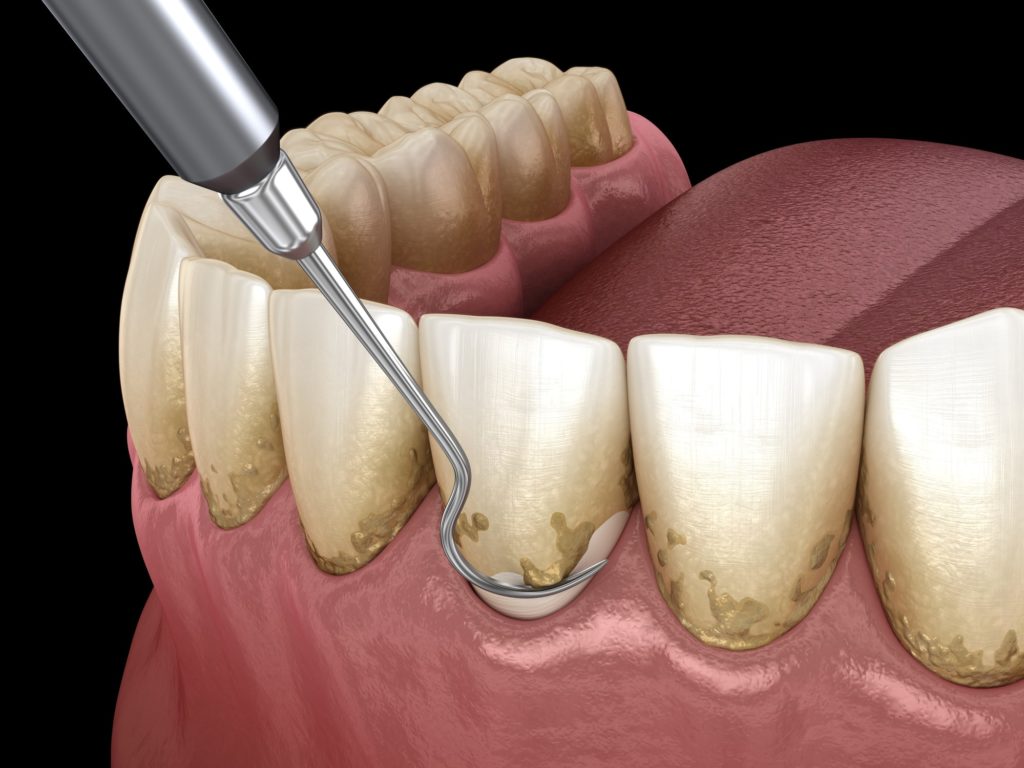Gum disease is the inflammation of the soft pink gum tissues as a result of bacterial infection form the plaque on our teeth. It’s not only the leading cause of tooth loss in adults but also places you at greater risk of heart attack and stroke among other serious health problems.
With this in mind, you shouldn’t ignore bleeding, swollen, puffy gums.
There are 3 stages of gum disease that we will go over in this blog:
- Gingivitis
- Periodontitis
- Advanced periodontitis
Symptoms of gum disease
Gum Disease – More Common Than You Might Think.
There are Three Stages of Gum Disease:
Gum disease doesn’t happen overnight. It’s a progressive disease.
Plaque (or calculus) builds on our teeth when food and saliva mix. Left on the teeth too long it starts the inflammatory process of gum disease.
Here’s the best way to understand it:
Gingivitis – Plaque hides bacteria and this bacteria leads to inflammation of the pink or red gums and the early stages of gum disease.
Periodontitis – As more plaque and bacteria accumulate the inflammation worsens. Gums get swollen and “pockets” (gaps) form between the gums and teeth. Some bone loss will happen around the teeth too.
Advanced Periodontitis – In the advanced stages of gum disease, the gums have significantly detached from the tooth roots and there is an advanced bone loss. Teeth become loose or fall out completely.
- Gingivitis – Is the earliest stage of gum disease
If you have gingivitis, you may have swollen or puffy gums. They may also become red and tender.
Another early sign of gingivitis is bleeding gums when you brush or floss your teeth. Other problems could lead to bleeding gums too so it’s best to check with your dentist.
At this stage, the bacterial infection is mild and hasn’t damaged the ligaments and bone that houses and protects our teeth.
Because there’s no damage to the bone or tooth ligaments, it’s most likely completely reversible. Great news, right?
Treating Gingivitis
A visit to your dentist for a professional scale and clean will remove the bacteria and plaque build-up on your teeth.
Your dentist may recommend specific home care instructions as plaque build-up is the cause of gingivitis, it’s essential that you brush and floss twice daily.
To stop plaque buildup stick to regular professional cleans. Everyone gets some plaque buildup, this applies no matter how well you brush and floss.
It’s also worth mentioning that depending on your genetics and other factors, you may get more than others. If you have a family history of gum disease, let your dentist know.
- Periodontitis
Periodontitis is a more advanced form of gingivitis.
Prolonged inflammation of the gums due to untreated gingivitis and plaque build-up causes the gums to separate from the tooth and form a gap.
This gap (called a “periodontal pocket”) traps food, plaque and bacteria leading to further infection, bone loss and more gum detachment.
While the periodontitis can be managed the bone loss and tissue damage caused by the disease is often irreversible.
Treating Periodontitis
To manage periodontitis your dental hygienist will do special cleaning (called “root planning”) to remove plaque beneath the gums. It’s done with a combination of hand scaling instruments and gentle ultrasonic equipment.
These cleans take a little longer than a normal hygiene appointment and will likely be spaced 3 months apart until your condition is under control.
While this can all sound a bit scary but today’s dental instruments are more advanced and therefore gentler than ever.
You’ll need to be extra vigilant about your oral hygiene and keep to regular check-ups with your dentist to avoid a recurrence of gum disease.
- Advanced Periodontitis
During this stage, the bone and ligaments that support your teeth become quite damaged and stop functioning as they should.
With advanced periodontitis, there is significant lost loss around your teeth and teeth will loosen, shift, and even fall out. This will affect your bite and make eating difficult and painful.
But no worries, we treat that too!

Schedule your appointment at (786) 502-4131 today.

